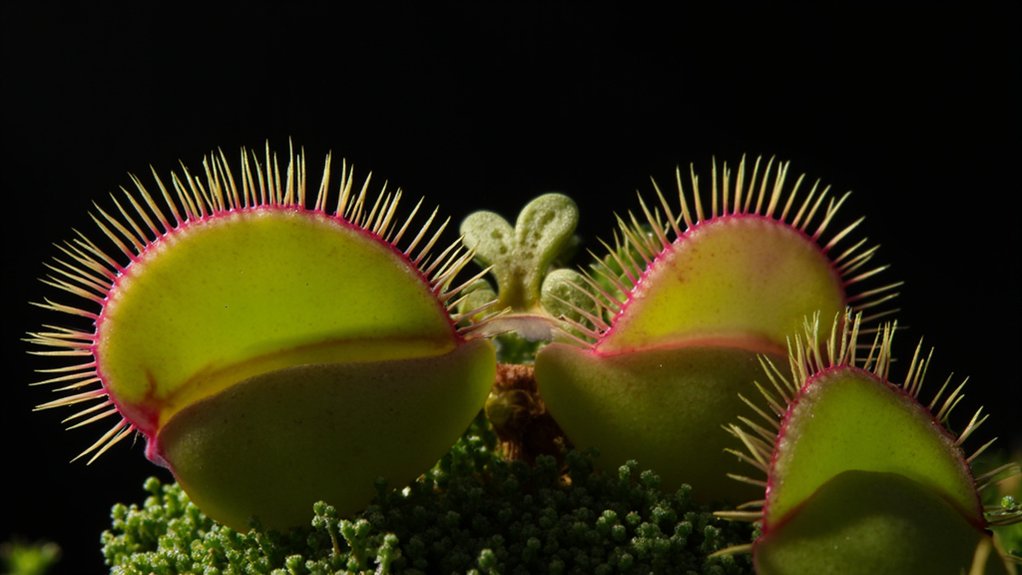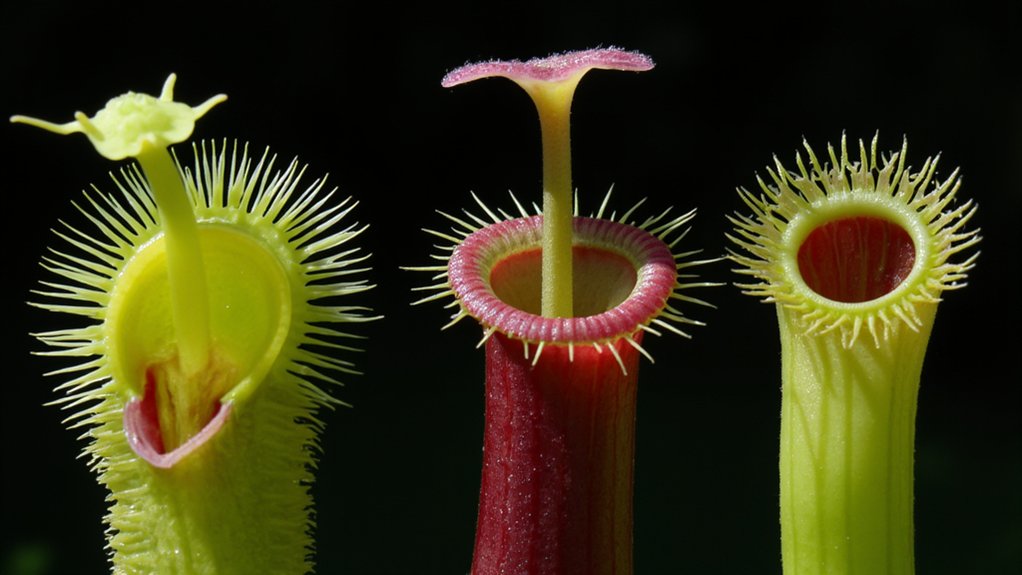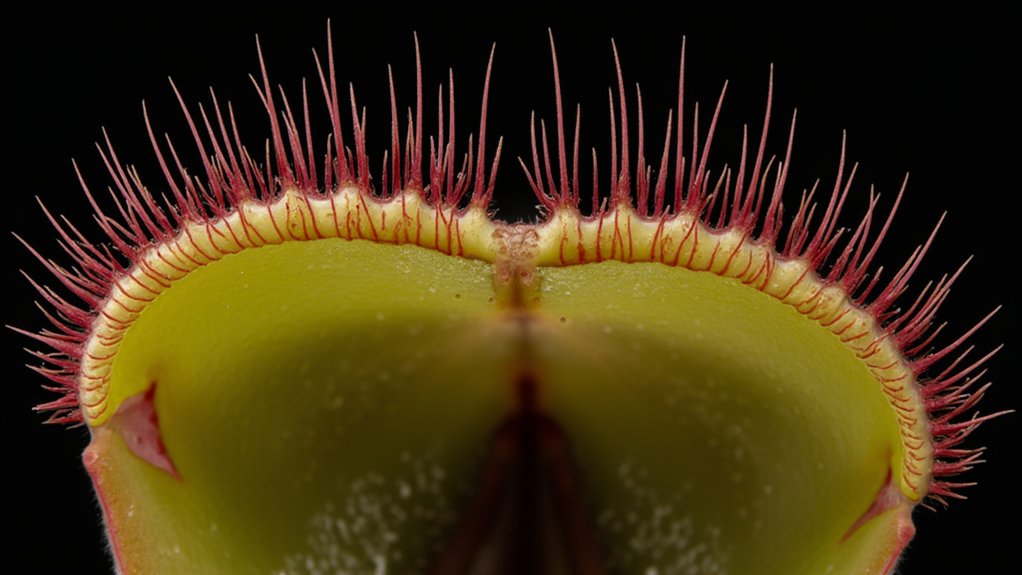You’ve probably seen those fascinating Venus flytraps at garden centers, but they’re just the tip of the carnivorous plant iceberg. These remarkable organisms have developed mind-bending ways to catch and digest their prey, from sticky death traps to water-filled pitchers that drown unsuspecting insects. While it might seem strange for a plant to eat meat, there’s actually some brilliant science behind their predatory behavior that’s transformed how we comprehend plant evolution.
Contents
The Evolution of Plant Carnivory

While most plants gather nutrients through their roots, carnivorous plants evolved a fascinating alternative strategy roughly 65 million years ago. You’ll find they developed specialized trapping mechanisms in nutrient-poor environments where traditional root absorption wasn’t enough to survive.
These plants didn’t just suddenly become carnivorous overnight. They adapted gradually, starting with sticky leaves that trapped insects by chance. Over millions of years, they’ve developed five distinct trap types: snap traps, pitfall traps, flypaper traps, bladder traps, and lobster-pot traps.
Today, you can spot over 600 species of carnivorous plants across every continent except Antarctica.
Types of Trapping Mechanisms

The five distinct trapping mechanisms used by carnivorous plants showcase nature’s most ingenious hunting designs. You’ll find snap traps in Venus flytraps, pitfall traps in pitcher plants, sticky glue traps in sundews, suction traps in bladderworts, and lobster-pot traps in corkscrew plants.
Each mechanism works differently: snap traps close in less than a second, pitfall traps use slippery walls and digestive fluid, and sundews employ sticky mucilage to ensnare prey. Bladderworts create a vacuum that sucks in tiny aquatic organisms, while corkscrew plants use downward-pointing hairs to force insects deeper into their spiral chambers.
Chemical Processes Behind Prey Digestion

Once carnivorous plants capture their prey, they’ll secrete specialized digestive enzymes to break down their meal into absorbable nutrients. These enzymes, including proteases, phosphatases, and nucleases, work similarly to the ones in your stomach, dissolving proteins and other organic compounds.
You’ll find that the digestion process typically takes 3-10 days, depending on the prey’s size and the plant species. During this time, the plant’s digestive glands actively pump hydrogen ions into the trap, creating an acidic environment with a pH between 2 and 5.
The dissolved nutrients are then absorbed through the plant’s specialized leaf cells, providing essential nitrogen and phosphorus compounds.
Notable Carnivorous Plant Species
Among notable carnivorous plants, you’ll find Venus flytraps, pitcher plants, and sundews leading the pack as nature’s most fascinating predators. Venus flytraps snap shut in under 100 milliseconds, while pitcher plants can grow tubes up to 12 inches deep.
Sundews utilize sticky tentacles that curl around prey in 3-60 minutes, depending on the size of the insect. You’ll spot these plants primarily in nutrient-poor environments, where they’ve evolved their carnivorous traits over millions of years.
The Cape sundew from South Africa and the American pitcher plant can digest prey within 2-14 days, extracting essential nitrogen and phosphorus from their victims.
Habitat and Environmental Adaptations
While most plants thrive in nutrient-rich soil, carnivorous plants have adapted to flourish in acidic bogs, swamps, and wetlands where nitrogen is scarce. You’ll find them growing in areas with pH levels between 4 and 5, where they’ve developed specialized mechanisms to extract nutrients from prey instead of soil.
These resourceful plants have evolved to handle intense sunlight and waterlogged conditions. They’ll often develop reddish pigments to protect against UV radiation, while their modified leaves can trap both water and prey. In areas where rainfall exceeds 20 inches annually, you’ll notice their traps becoming larger and more efficient.
Conservation Status and Threats
Despite their remarkable adaptations, carnivorous plants face serious threats from habitat destruction and illegal collection. You’ll find many species struggling to survive as wetlands are drained for agriculture and development projects.
Climate change poses another significant challenge, as it’s altering the delicate bog environments these plants need. You can see this impact particularly in Venus flytraps, which now exist naturally in only a tiny region of North and South Carolina.
If you’re interested in helping, don’t buy wild-collected specimens. Instead, choose nursery-grown plants, as poaching remains a serious issue that’s pushing some species toward extinction.
